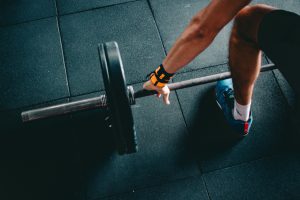Bodybuilding is an iconic style of weight training where the goal is to develop size, symmetry, and an overall aesthetic appearance. It’s pretty obvious why it would be so popular with most young guys. Looking good means attracting the opposite sex.
While bodybuilding has evolved over the years and developed a bad reputation for steroid use (which is ridiculous, as all elite-level sports today have an incredible amount of PEDs usage), the concept remains the same. The goal is to train for hypertrophy (bigger muscle cells) and hyperplasia (more muscle cells).
This usually translates to multiple exercises for each body part with 3-4 sets of 8-12 repetitions. As Arnold would say, “the pump is better than sex.” Getting a strong pump is a very enjoyable sensation. It just means you are putting in the work and are therefore going to reap the results.
Bodybuilding style workouts are probably the easiest to plan. If you aren’t completely new to the gym scene, you’ve probably strung together some exercises in the past. Effectively this would be a bodybuilding workout (if you did enough volume like I talked about above).
Yet, there’s a bit more to it than that. Bodybuilding goes beyond just a certain number of sets and reps for a ton of exercises. Its core principles are focused on making an effective “mind-muscle connection” where one can feel the muscle stretch and contract.
This is what will make the difference between going to the gym just for the sake of going, and actually getting an amazing workout in that is going to put you on the path to success. While I don’t suggest bodybuilding schedules as the best way to progress as a natural, there are some great concepts that can be learned.
When you truly understand what it means to focus on stretching and contracting a muscle, you will be able to activate muscle groups easier, making it that much more streamlined to put on quality mass. While nothing can beat performing heavy compound movements, accessory work is definitely beneficial. Furthermore, all the secondary exercises that I perform all follow a bodybuilding approach. I focus on activating the muscle and stimulating it. I don’t care how much weight I’m lifting and neither does anyone else. All I am concerned with is getting a good workout.
Take Bicep Curls for example. This exercise might take the crown for the most iconic “bro lift” of all time. Literally every time that I go to the gym I see people that are much smaller and weaker than me (this is not to put anyone down, I just want to make a point about making wise decisions) swinging around weights that are much too heavy.
There’s multiple things wrong with this already. First off, and probably most obvious, is the fact that they are about to snap something. Using a weight that you can’t full control lends itself to injuries. You don’t want to just start seeing results and then end up broken.
However, another negative consequence is that the muscle isn’t being stimulated very well. If you can’t slowly squeeze each rep at the top and lower the dumbbell slowly while bracing your entire body and moving nothing but your forearm (as it rotates about your elbow), you need to pick a lower weight.
Just to give a general idea, I have about 16.5 inch arms. That’s a decent size for someone my height (I’m short at 5’9”). I haven’t used anything heavier than a 45 pound dumbbell in a while, and I mostly use 35-40 pounds or less and focus on getting in lots of volume. I just say this to prove that there is no need to go heavy on accessory movements. That’s not the point. Save your feats of strength for squats, bench, deadlifts, and OHP (Overhead Press).
Hopefully at this point you can come away with the knowledge that you should aim to continually improve your MMC (mind muscle connection). By doing this, you will continue to improve your natural ability to stimulate a muscle, even when it isn’t an isolation movement.
If you can do this, you will be able to take advantage of a huge “hack.” To give you an example, consider leg extensions. They are a decent movement that can help develop one’s quads. You can use a movement like that to learn to activate your quads better. This will inevitably help you when you go to squat and learn you are better able to “feel” your quads in general.
When it comes to seeing results, it’s all about maximizing your potential using smart training choices. There is a lot of information out there that all plays a role in some fashion. Yet, at the end of the day you only have so much time. You can’t do it all. Therefore, picking the methods and tactics that work best will accelerate your progress dramatically.
Learn to take advantage of the things that bodybuilding has taught us. However, do not reply on bodybuilding as an effective training strategy over the long term. I suggest you check out the Training Plans Overview and gain an understanding of what workout structures work best for natural athletes.
